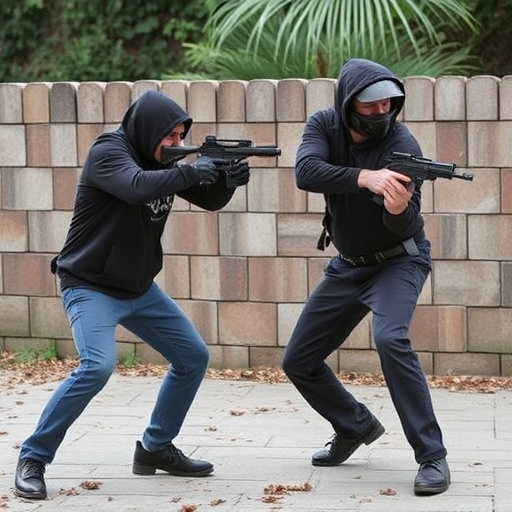Pepper spray, a legal yet regulated self-defense tool, temporarily incapacitates attackers. To effectively utilize it, individuals should educate themselves on local laws, understand its mechanics, practice safe handling, and learn optimal deployment techniques focusing on sensitive areas. Choosing the right pepper spray with high capsaicin content, ease of use, compact design, water resistance, and a 2-3 feet range ensures reliability in emergency situations. Mastering these Best Pepper Spray Self Defense Techniques enhances safety and enables strategic disability of attackers.
“Uncover the power of pocket-sized personal defense with our comprehensive guide. In today’s world, knowing how to protect yourself is essential. We explore the effectiveness and legal aspects of pepper spray, helping you navigate its use responsibly.
Learn about the best practices for choosing your self-defense tool, focusing on key features that matter. From can size to spray pattern, we’ll show you how to select the perfect pocket-sized defense. Additionally, discover top best pepper spray self-defense techniques to ensure safety and confidence.”
- Understanding Pepper Spray: Its Effectiveness and Legal Considerations
- Choosing the Best Pocket-Sized Personal Defense Spray: Features to Look For
- Mastering Pepper Spray Self-Defense Techniques: Safety and Strategy Tips
Understanding Pepper Spray: Its Effectiveness and Legal Considerations
Pepper spray, a common self-defense tool, is designed to incapacitate an attacker by causing temporary blindness and severe irritation of the eyes, nose, and throat. When deployed, it creates a cloud of oleoresin capsicum (OC) peppers, which can disable an assailant for several minutes, providing the user with valuable time to escape or seek help. The effectiveness of pepper spray lies in its ability to disrupt balance and vision, making it especially useful in close-quarters encounters.
While pepper spray is a popular choice for personal defense, understanding its legal implications is crucial. Laws regarding pepper spray vary by jurisdiction, so knowing the local regulations is essential before purchasing and carrying it. Some regions have strict rules on who can possess pepper spray and where it can be used. The best pepper spray self-defense techniques involve familiarizing yourself with the device’s mechanics, practicing safe handling, and learning proper deployment methods to ensure its effectiveness in an emergency while adhering to legal boundaries.
Choosing the Best Pocket-Sized Personal Defense Spray: Features to Look For
When selecting a pocket-sized personal defense spray, several key features should be top of mind to ensure its effectiveness and reliability. First, consider the active ingredient; pepper spray is the most common choice for self-defense techniques, known for its ability to temporarily incapacitate an attacker by causing irritation and burning sensations in the eyes and respiratory system. Opting for a product with high concentrations (typically 1% or more capsaicin) increases its potency.
Additionally, look for features like ease of use, as you’ll want a spray that deploys quickly and easily in stressful situations. A compact design, lightweight build, and a convenient clip for easy carrying are essential. Water-resistant construction can also be beneficial, ensuring the device withstands outdoor elements or accidental submersion. Lastly, check the range and spray pattern; a recommended distance of 2-3 feet and a wide, even spray ensures maximum coverage during self-defense techniques.
Mastering Pepper Spray Self-Defense Techniques: Safety and Strategy Tips
Mastering Pepper Spray Self-Defense Techniques involves understanding both safety and strategic application. The best pepper spray self-defense techniques emphasize responsible use, ensuring you only deploy the spray when absolutely necessary to disable an attacker temporarily and escape. Familiarize yourself with local laws regarding pepper spray ownership and usage, as these vary significantly by region.
Strategically, practice aiming for eyes, nose, and mouth—the most sensitive areas. Hold the canister at arm’s length, pointing it away from you first, then towards your target. Practice deep breathing before and after deployment to avoid inhaling any residual spray yourself. Regularly test your spray’s range and effectiveness, ensuring it meets manufacturer recommendations. Additionally, keep your spray readily accessible—in a pocket or purse—for swift deployment in case of an emergency.
When it comes to personal safety, equipping yourself with a pocket-sized pepper spray device can be a powerful tool. By understanding its effectiveness, legal aspects, and choosing the right product, you can enhance your ability to defend yourself effectively. Mastering the best pepper spray self-defense techniques will ensure you use it safely and strategically when needed. Stay prepared, stay informed, and prioritize your well-being.
